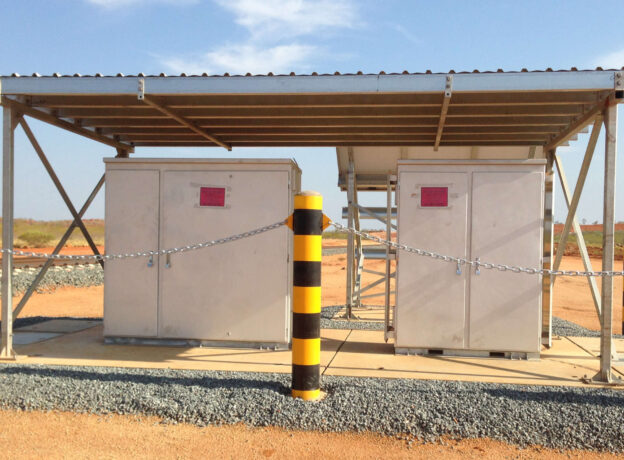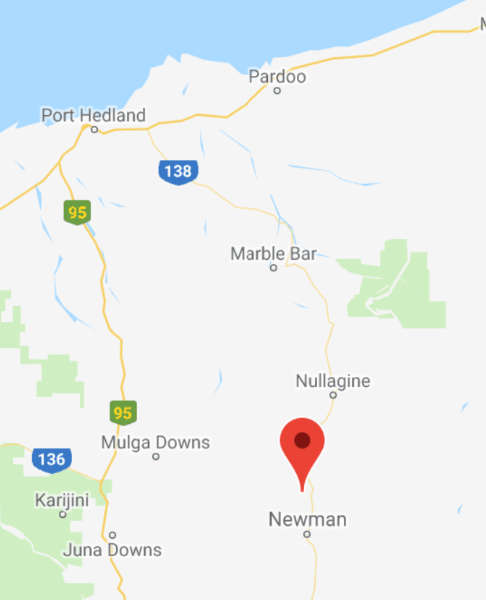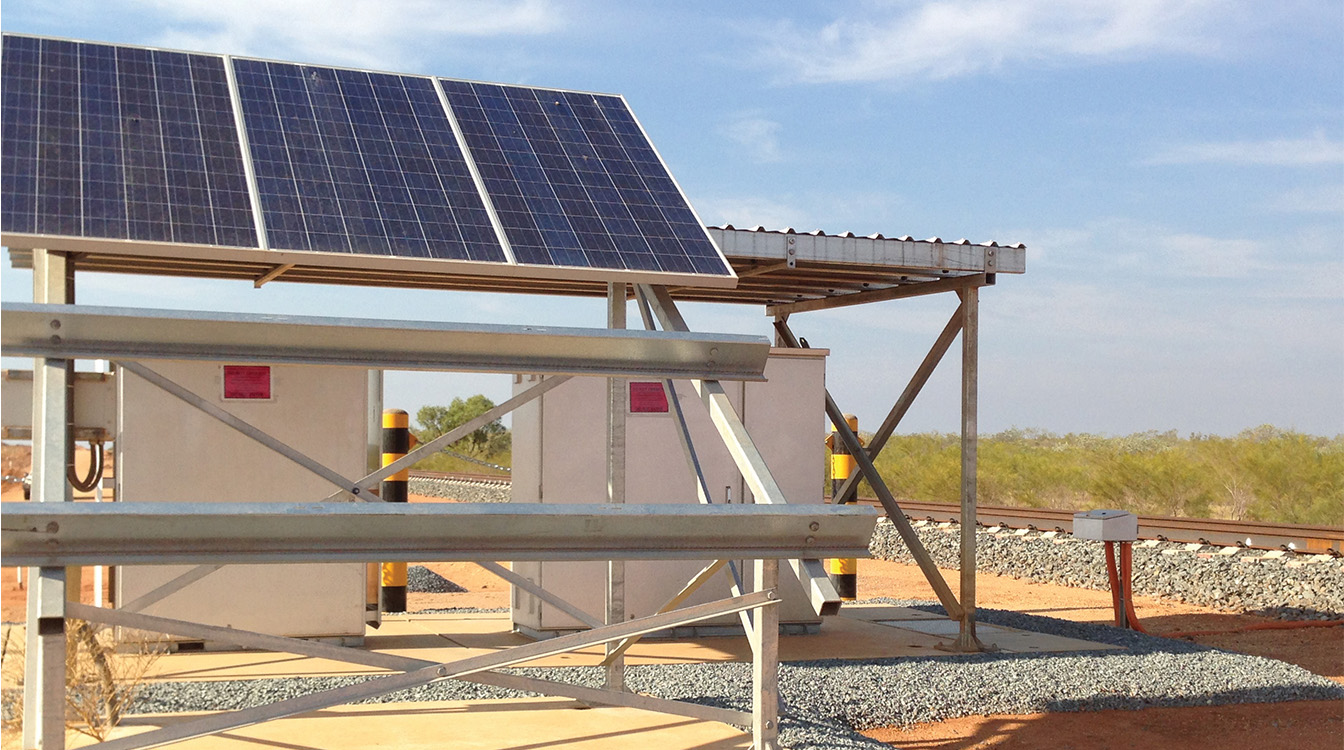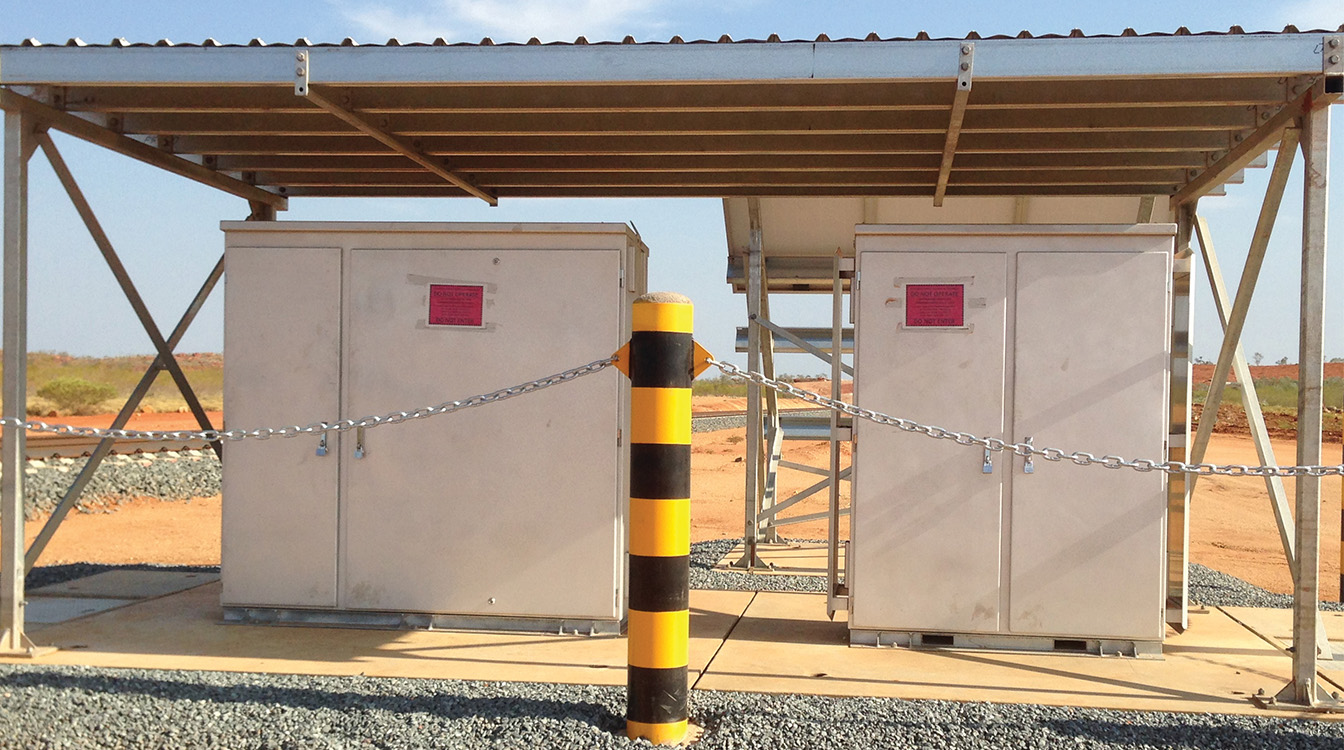The Roy Hill heavy haul 342km railway line in Western Australia is a landmark project in its engineered ‘flexibility and upgradability’. This two year turnkey project was awarded to Ansaldo STS. The project required a technically superior solution to transport up to 55mtpa of iron ore with five daily 232-wagon trains. With a proven history designing and supplying enclosure solutions for heavy haul rail projects, B&R Enclosures were contracted to supply a range of 3mm Aluminium rail cabinets. This included single and double width control cabinets with full internal frames, post mount test switch boxes, post mount track disconnect boxes, single and double width battery cabinets with battery interconnection cables.
These rail cabinets were part of the project’s satellite positioning-based train control and protection technology including integrated electronic train order systems, centralised interlocking as well as communications-based protection of maintenance vehicles to be built by Samsung C&T for Ansaldo STS. This project drew on previous expertise and products supplied to the Rio Tinto AutoHaul project and RAFA. However, the project also demanded adherence to a unique set of Roy Hill project requirements and specifications.
The cabinets were installed in the remote outback of Northern Western Australia. Ambient temperatures in this region can be above 50 degrees in the dry season, and monsoonal in the wet season. There was also a high potential for vermin infestations and extreme dust infiltration. As such, the rail cabinets required technical approval and accreditation through rigorous testing and documentation protocol.
At B&R’s head office located in Brisbane, the design team were able to utilise their in-house environmental testing facility to investigate the effects of structural certification, heat rise, humidity, wind load and ingress protection. A series of tests were conducted which included placing an operational rail cabinet within an environmental room. Resistive heaters were then used to simulate internal heat loads of between 500 and 2000 watts loss. A maximum 20K temperature difference was obtained through testing for an ambient temperature range of 272.4K to 323K and the above-mentioned heat loads.
Wind testing of the cabinets was simulated through applying a manual point force between 30 and 55 (kgf) to simulate a Region D, Level 4 wind load.
A particular point of difference was in B&R’s proficiency to manufacture using aluminium. There are several advantages of using aluminium as an alternative to stainless steel or zinc coated steel. This includes improved corrosion resistance, low density and excellent thermal conductivity for high exposure environments. The use of aluminium also lends to decreased costs in freight and general installation due to its lighter make-up.
A team of B&R design engineers worked closely with Ansaldo STS personnel to refine the cabinet solution ensuring the cabinet’s integrity in sustained arduous environmental conditions. The comprehensive design research and testing conducted by B&R allowed Ansaldo STS to further qualify the project’s successful delivery and long-term performance. Accordingly, B&R worked very closely with Ansaldo STS prior to and throughout the project time line – from early stage design, prototyping and testing through to final commissioning, completion and hand over.







